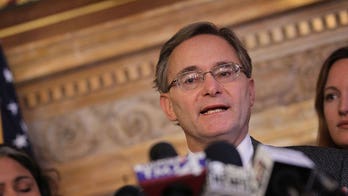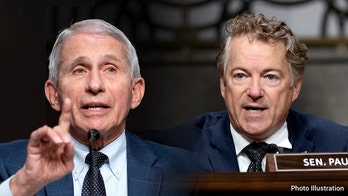By most measures, America's education system ranks among the best. Our classrooms, computer labs, athletic fields and 'enrichment programs' for under-achieving and special education students are the envy of the world.
In fact, the U.S. spends more on education than defense. On a per pupil basis, we rank only behind Switzerland and Norway.
CLICK HERE TO SEE YOUR SHARE WITH OUR TAXPAYER CALCULATOR
And that's not likely to change under President Obama. His 2012 budget increases federal education spending by 21 percent to $77 billion dollars.
Yet critics say that's a mistake, since there is no link between spending and student performance.
"There really is no correlation between spending per pupil and achievement per pupil," argues Neal McClusky with the Cato Institute Center for Educational Freedom. "Both parties have done this for many decades - they talk about spending money on schools as if that is synonymous with actually educating people but it isn't. What we've seen that money go to is just bigger and bigger staff, better paid teachers or other employees but nothing in terms of outcomes."
Since 1985, federal education spending tripled, yet studies by the National Assessment of Educational Progress show reading, math and science scores remained flat. Internationally, our 8th graders rank 14th in reading, 17th in science and 25th in math. Almost 30 percent of our teenagers don't finish high school, according to the National Center for Education Statistics, and half who enter college drop out, even though per pupil spending nationally averages more than $10,000 a year. America has fallen to 9th in the proportion of young people with a college degree.
Despite those numbers, most educators say American schools are under-funded.
"American students right now are getting less, not more, at a time when President Obama has said we have this race to the future -- that we need to invest more in public education," says John Rogers with the UCLA Graduate School of Education. "I think we need to invest in public education in ways that are wise. President Obama talked about the importance of teachers and he talked about the need to bring new teachers into science and technology, engineering and math."
Historically, school funding was a local responsibility. States got increasingly involved in the 1960's during racial desegregation to smooth out differences between districts. Since 1970, every year the federal government has gotten more involved, from a financial and regulatory point of view.
Many conservatives would eliminate the federal Department of Education, but politically that's unrealistic. Even a minor cut this year by the GOP - $11 billion or 16 percent from the current $72 billion budget, failed. Given the desire of this and future presidents to please voters, most doubt Washington will ever actually reduce federal aid to education, even though there is little or no evidence its money improves student achievement.




